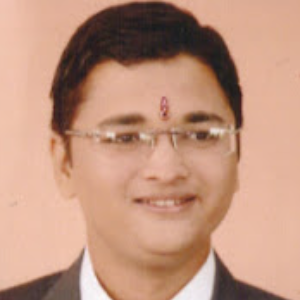Title : Unveiling green chemistry: Exploring sustainable practices
Abstract:
The forthcoming presentation will delve into the fundamental tenets of Green Chemistry, highlighting key methodologies such as Phase Transfer Catalysis (PTC), Ionic Liquids (IL), Sonochemistry, and Microwave Irradiation (MWI). These cutting-edge approaches epitomize the evolution of sustainable practices in chemical synthesis, offering both theoretical insights and practical applications.
Green Chemistry, often referred to as sustainable chemistry, embodies the ethos of minimizing the environmental impact of chemical processes while maximizing efficiency and safety. At its core, Green Chemistry seeks to design chemical products and processes that reduce or eliminate the use and generation of hazardous substances.
One pivotal aspect of Green Chemistry is Phase Transfer Catalysis (PTC), a technique that facilitates the transfer of reactants between immiscible phases by employing a catalyst. By leveraging a catalyst, typically a quaternary ammonium salt or crown ether, PTC enables reactions to proceed efficiently under mild conditions, thereby reducing energy consumption and waste generation. This approach has found widespread application in organic synthesis, pharmaceuticals, and polymer chemistry.
Ionic Liquids (IL) represent another cornerstone of Green Chemistry, offering a versatile solvent platform with unique properties such as low volatility, high thermal stability, and tunable polarity. These molten salts, composed entirely of ions, have emerged as green alternatives to traditional organic solvents due to their negligible vapor pressure and recyclability. Ionic Liquids play a vital role in various processes ranging from biomass conversion and catalysis to electrochemistry and separation technologies.
Sonochemistry harnesses the power of acoustic cavitation to drive chemical reactions, offering a green route to synthesis through the generation of highly reactive species such as free radicals and hot spots. Ultrasonic irradiation induces cavitation bubbles in liquid media, leading to localized heating and pressure differentials that accelerate chemical transformations. This sonochemical activation enables the synthesis of complex molecules under mild conditions, minimizing energy input and enhancing reaction rates.
Similarly, Microwave Irradiation (MWI) has revolutionized chemical synthesis by enabling rapid and selective heating of reaction mixtures through dielectric heating mechanisms. Microwave irradiation exploits the ability of polar molecules to absorb electromagnetic radiation, converting it into thermal energy. This efficient heating method promotes homogeneous heating throughout the reaction vessel, facilitating faster reaction kinetics and higher yields. Moreover, MWI allows for precise control over reaction parameters such as temperature and pressure, thereby enabling greener and more sustainable synthesis routes.
Audience Take Away Notes:
- Understanding of Green Chemistry Principles: The audience will gain a comprehensive understanding of the fundamental principles of Green Chemistry, including its importance, objectives, and strategies for minimizing environmental impact in chemical processes. This knowledge equips them with a framework for designing and implementing sustainable practices in their own research or industrial projects
- Proficiency in Advanced Synthetic Techniques: Attendees will learn about cutting-edge synthetic methodologies such as Phase Transfer Catalysis (PTC), Ionic Liquids (IL), Sonochemistry, and Microwave Irradiation (MWI). By grasping the theoretical underpinnings and practical applications of these techniques, they will be able to incorporate them into their work to streamline synthesis, improve efficiency, and reduce waste generation
- Application in Research and Industry: The insights gained from the presentation can directly benefit the audience in their research endeavors or industrial applications. They will be equipped with innovative tools and approaches to address chemical synthesis challenges more sustainably, leading to cost savings, enhanced productivity, and a reduced environmental footprint in their respective fields
- Potential for Interdisciplinary Collaboration: The research presented may serve as a catalyst for interdisciplinary collaboration among faculty members from different departments or institutions. By exploring the intersections of Green Chemistry with other fields such as materials science, engineering, and environmental science, researchers can leverage synergies to advance knowledge and address complex societal challenges collaboratively
- Facilitation of Design and Process Optimization: The adoption of Green Chemistry principles and advanced synthetic techniques can simplify and expedite the design process for chemical products and processes. By integrating sustainable practices from the outset, designers can streamline operations, minimize resource consumption, and enhance overall process efficiency
- Enhanced Accuracy and Reliability: Incorporating innovative methodologies like PTC, IL, Sonochemistry, and MWI into chemical design and synthesis can improve the accuracy and reliability of experimental outcomes. These techniques offer precise control over reaction parameters, leading to reproducible results and facilitating the development of robust, scalable processes
- Promotion of Environmental Stewardship: By embracing Green Chemistry principles and sustainable synthetic techniques, the audience contributes to broader efforts towards environmental stewardship and corporate social responsibility. Implementing greener practices not only benefits individual projects but also contributes to a collective movement towards a more sustainable and environmentally conscious chemical industry



